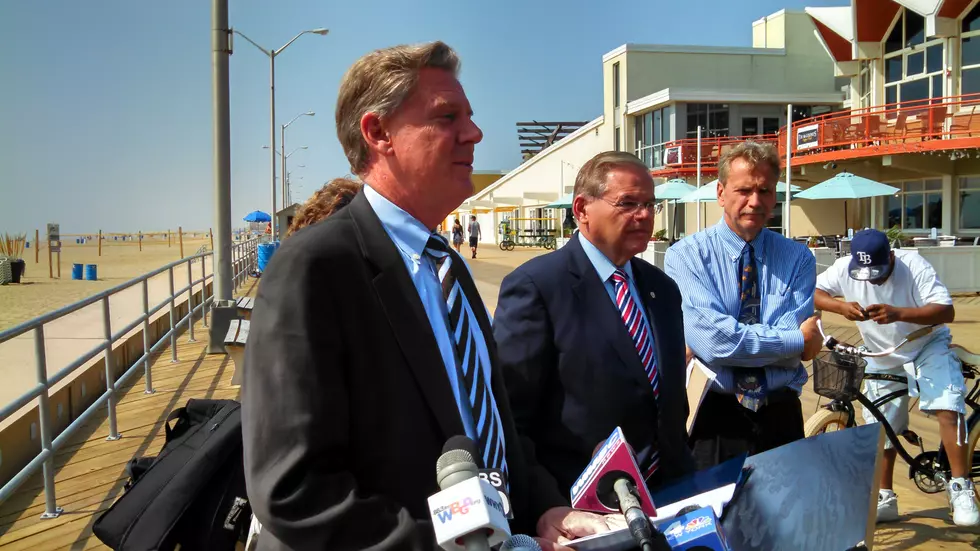
Sonar Sea Floor Imaging Study Explained by Lead Scientist
Coastal advocates and fishing interest may actually be vilifying a study that could help save life and property at the Jersey shore.Listen to a conversation with Rutgers geology professor Gregory Mountain
Lead scientist for the sea floor survey, Rutgers geology professor Gregory Mountain, said the proposed acoustic 3D imaging, known by its detractors as 'seismic testing', will help determine the history of sea level change in the sediment off the continental shelf.
Mountain said a similar study was conducted in the same area in 2009 where fossils were collected from different layers of sediment. When they go back this summer, they'll use sonar equipment in an effort to determine "the rate and timing of sea level change and its impact on shorelines, first in New Jersey and in general, what do we anticipate rising sea level is going to do to shorelines around the planet," Mountain said.
According to Mountain, the study, that's anticipated to start this summer, will help scientist understand the cyclical history of sea level change and its potential impact.
"Is it a possibility that a shoreline such as Long Beach Island exist for a while and then is overcome by sea level change? And over a very short period of time, is drowned and then the shoreline is now on the mainland, and now Waretown is the shore?"
Presently, plans for the acoustic imaging study are being reviewed by the National Marine Fisheries Council, that must give its approval. The study is in the 30 day public comment phase, that some opponents want the Fisheries Council to extend. That's not all, if it's given approval, the geologist must take a team of Scientist from Fisheries with them to listen for underwater sounds of marine life to insure they're not being harmed.
"Well Fisheries has made certain that we time our operation to have a minimal impact on any fish migrations, or fish feeding or fish spawning that goes on in this area," Mountain said.
He also explained that while their study uses equipment that's similar to what geological survey companies use to test for the presence of oil, it's not the same.
"We're using very much small seismic sources than oil companies do. We're examining a very much shallower portion of the seabed than they look at and we have no interest whatsoever in finding oil or gas," Mountain said.
The proposed acoustic 3D imaging sea floor survey is being conducted in partnership with Columbia University's Lamont-Doherty Earth Observatory and the University of Texas. It will be funded by $369,000 grant from the National Science Foundation after recently being selected as the top winner the Foundation's Sweepstakes.
"Superstorm Sandy was an indication that we have a very vulnerable shoreline here as sea level is rising and we ought best to know what the earth has recorded in its past," Mountain said.
MORE COVERAGE:
More From 92.7 WOBM





![Seismic Testing Proposal Off NJ Coast Gets Resistance [AUDIO]](http://townsquare.media/site/385/files/2014/04/59327_1562462454547_6432815_n.jpg?w=980&q=75)


